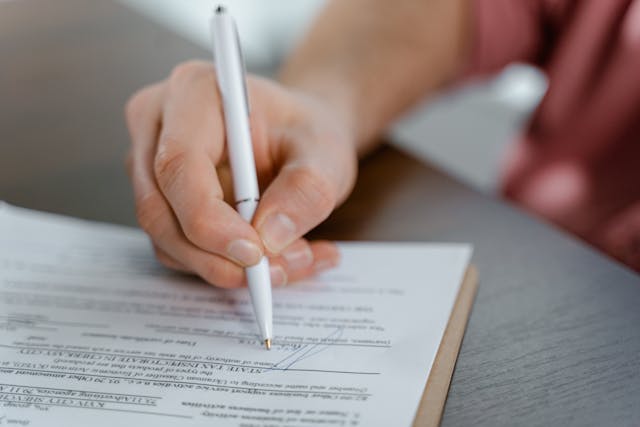_1.jpg)
Key Takeaways:
- Put It in Writing: Always use a written lease agreement, it’s the best way to clearly outline responsibilities, rent terms, and rules for both you and your tenants.
- Know the Local Laws: Every area has its own rental laws, so make sure your lease lines up with the legal requirements where your property is located.
- Set Expectations Early: A solid lease helps avoid confusion by laying out what’s expected from both sides right from the start.
Owning a rental property in Northern Virginia is a smart move. Not only does it generate consistent passive income, but it also helps strengthen your overall financial position. Plus, real estate in the area tends to appreciate steadily, meaning the longer you hold onto your investment, the more equity you build.
That said, managing a rental isn’t always easy. It can quickly become a full-time job between cleaning, inspections, maintenance, and marketing. Add in the challenges of dealing with difficult tenants, squatters, or potential property damage, and it’s clear that being a landlord comes with its fair share of responsibilities.
One of the most important tools for protecting your rental is a strong lease agreement. The good news is you don’t need to be a legal expert to create one. In this guide, our Key Home Sales & Management team will share the best strategies for drafting a solid lease agreement for your Northern Virginia rental.
Learn More About Partnering With Us!
How to Write a Solid Lease Agreement: A Step-by-Step Guide for Landlords
As a landlord, you should never rely on verbal agreements. Unless they’re recorded, spoken agreements are hard to prove and, thus, almost impossible to enforce. That’s why lease agreements are so important.
A well-drafted lease will help you outline the terms of the tenancy, maintenance rules, payment deadlines, and guidelines on property use. This can go a long way in preventing misunderstandings and protecting your investment. Writing a comprehensive lease agreement doesn’t have to be overly complicated. Here are some tips to help you:
1. Research the Local Rental Laws
As a landlord, you must ensure compliance with federal and local landlord-tenant laws throughout the rental process. Failing to do so can result in fines and legal disputes.

Before you start writing your lease agreement, take the time to research key rental laws. Keep an eye out for security deposit laws, zoning codes, rent control laws, fair housing laws, and eviction procedures! By ensuring your lease complies with both state and federal regulations, you’ll protect both your and your tenants’ rights, set clear expectations, and prevent landlord-tenant disputes.
2. Collect Key Information
A lease agreement is a legally binding contract, so it’s important to include key terms that protect both you and your tenant. Having the right details ensures your lease is enforceable and helps prevent future disputes.
Here is key information you should include in all your leases:
- Start & End Dates: Clearly state the lease's beginning and end dates.
- Notice Periods: Specify how much notice is required to terminate or renew the lease.
- Monthly Rent: Include the rent amount, acceptable payment methods, and the due date.
- Late Fees & Grace Periods: Outline any penalties for late payments and the allowed grace period.
- Security Deposit: Note the security deposit amount, possible deductions, and conditions for return.
- Non-Refundable Fees: List any non-refundable charges, such as pet fees or cleaning costs.
- Occupancy Limits: Set the maximum number of residents allowed.
- Guest Policy: Define how long guests can stay and any related restrictions.
- Tenant Maintenance Duties: Clarify what upkeep or minor repairs tenants are responsible for.
- Modification Rules: Detail whether tenants can make changes to the unit and under what conditions.
- Property Rules: Include policies on noise, pets, smoking, subletting, and parking.
- Mandatory Disclosures: Add any legally required disclosures specific to your property or location.
- Contact Information: Include full names and current contact information for all parties.
- Signatures: Ensure both the landlord and the tenant sign and date the agreement.
A well-structured lease sets the tone for a smooth rental experience and helps protect your investment from day one.

3. Write Your Lease Agreement
Once you’re ready, it’s time to sit down and write your lease agreement. This can be daunting. After all, the lease agreement sets the pace for the rental experience. Here are some tips to help you:
- Use a Template: You can find plenty of free templates online. Just make sure to use a reliable template specific to your state to save time and ensure legal compliance.
- Keep the Language Clear and Simple: Use simple, everyday language to ensure tenants can easily understand the rules and terms outlined in your lease.
- Be Specific and Detailed: Clearly outline key terms, such as the rent amount, due dates, security deposit, maintenance responsibilities, and rules for pets or guests. The more detailed you are, the easier it will be to communicate your expectations.
- Use Bullet Points or Sections: Lease agreements tend to be long and contain a lot of information, which can make them difficult to read and understand. Breaking up content with headings and bullet points will make it easier for tenants to read.
- Stay Consistent: Legal jargon and real estate terminology can confuse tenants, especially if you’re using multiple terms to refer to the same thing. To avoid confusion, it’s best to use the same terminology throughout. For instance, always use the word “tenant” instead of switching between “renter” and “tenant.”
- Proofread Carefully: Grammatical errors won’t turn your lease agreement invalid, but they can make you look unprofessional. Before sending the agreement to your tenants, make sure to double-check for grammar errors, unclear terms, or contradictions.

4. Sign the Agreement
Once you’ve proofread and edited the agreement, it’s time to send it over to your tenants. You can email it to them and then set up a time for you to meet in person to review and sign it. This way, you’ll be able to ensure tenants understand the terms of the lease before signing it. This is also a good opportunity to go over the next steps and move-in plans.
Frequently Asked Questions About Property Management
Bottom Line
If you’re thinking about renting out a property, it’s essential to have a well-drafted lease agreement in place. Without one, your property could be exposed to holdover tenants, squatters, loss of rental income, and costly damage.
Hiring Key Home Sales & Management takes the guesswork out of lease creation. Our team understands Northern Virginia’s rental laws inside and out, and will help you establish clear lease terms and property rules that protect your investment from the start. From drafting to enforcement, we make sure every detail is covered so you can rent with confidence.






